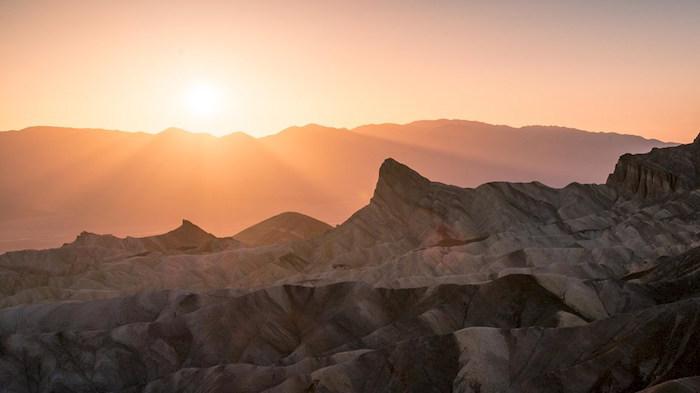
Visitors to national parks in the Southwest will be challenged in the coming days by extremely hot weather/NPS
From boiling waters and sharks to precarious perches and high-above-sea-level elevations, the National Park System can be a dangerous place if you don't recognize the hazards and prepare properly for your adventure.
In the past two weeks alone, there have been at least nine deaths in the park system, and that number surely will increase.
At Yellowstone National Park, a kayaking guide died Wednesday in Yellowstone Lake, a victim most likely of hypothermia caused by the lake's low-40-degree water temperature, while a concessionaire's employee received serious burns the night before when he somehow fell into a hot spring. A few days earlier, another Yellowstone visitor died in a fall.
At Zion National Park, a visitor on the trail leading to Angels Landing died Wednesday of an apparent heart issue.
Earlier in June, there was an apparent drowning in Great Smoky Mountains National Park, which also had another death in which a man fell from the top of Ramsey Cascades, a 100-foot tall waterfall. A man on the first day of a river trip through Dinosaur National Monument's Lodore Canyon died when he fell out of his inflatable kayak into the Green River. Running the total to nine were a visitor to Hawai'i Volcanoes National Park who was killed in a traffic accident, one at Cape Hatteras National Seashore who drowned while trying to save another swimmer, and a hiker at Saguaro National Park who perished, an apparent victim of the heat.
And at Grand Canyon National Park, a search had failed, at least through Friday, to find a missing, disoriented 72-year-old hiker.
National park settings can be as dangerous as they are beautiful. From the top of Angels Landing, the views down Zion Canyon are incredible. But the hike up can be treacherous if you fear heights, and the elevation tops out just shy of 6,000 feet, an elevation that can be demanding on someone who left their sea-level home the day before for their Zion vacation.
And while the elevation at sea level is not a challenge for someone who lives, say, in the mile-high city of Denver, rip tides and sharks found at Cape Hatteras and Cape Lookout national seashores can pose unexpected risks.
Anyone who visits southern Utah national parks in the coming days, or parks in Arizona, Nevada, and California, will encounter extremely hot temperatures that can be life-threatening if you're not careful. At Death Valley National Park, the forecast calls for temperatures to reach 126 degrees Fahrenheit by Tuesday, while Arches National Park could reach 105 degrees Fahrenheit. Joshua Tree National Park visitors should prepare for temperatures approaching 116 degrees Fahrenheit by Wednesday.
Also bracing for the heat wave was the staff at the Grand Canyon.
The National Park Service recommends not hiking below the rim during the excessive heat warning. Hiking in extreme heat can lead to serious health risks including heat exhaustion, heat stroke, hyponatremia, and hyperthermia. Anyone who still plans to hike into the canyon should take extra precautions to hike smart. Hikers should plan to hike before 10 a.m. and after 4 p.m., resting near shade and water to avoid the worst heat of the day. The National Park Service advises that anyone hiking in heat should balance food and water intake, drink when thirsty, and get wet to stay cool.

Death Valley National Park normally is very hot during the summer months, but it will be extremely hot in the coming days/NPS
At Zion National Park, officials were urging visitors to practice “heat safety.”
"Take your time while hiking, try to find shade, and stay hydrated – drink plenty of water," they said. "Water bottle filling stations can be found at visitor centers, the Park Museum, and the Zion Lodge. Consider covering exposed skin and using protective sunscreen. Children are especially vulnerable to heat-related illness and sunburn. Keep your pets cool and hydrated. Do not leave pressurized containers in your vehicles, such as aerosol spray cans."
Added Chief Ranger Daniel Fagergren: “It’s that time of year when we start to see a lot of heat-related injuries. With the sudden spike in temperature, there hasn’t been a lot of time for visitors to get acclimated. Plan your hikes early in the morning or later in the evening, and avoid strenuous outdoor activities during the hottest part of the day. Know your limitations and please stay hydrated.”
At Grand Canyon National Park, officials were telling visitors to be aware of wildlife trying to minimize their movement during the heat wave.
"During our heat wave this weekend, you may see wildlife seeking out shade. Drive slowly and watch for deer and elk by the side of the road," the park social media team tweeted.






Comments
People go missing too. A lot of people